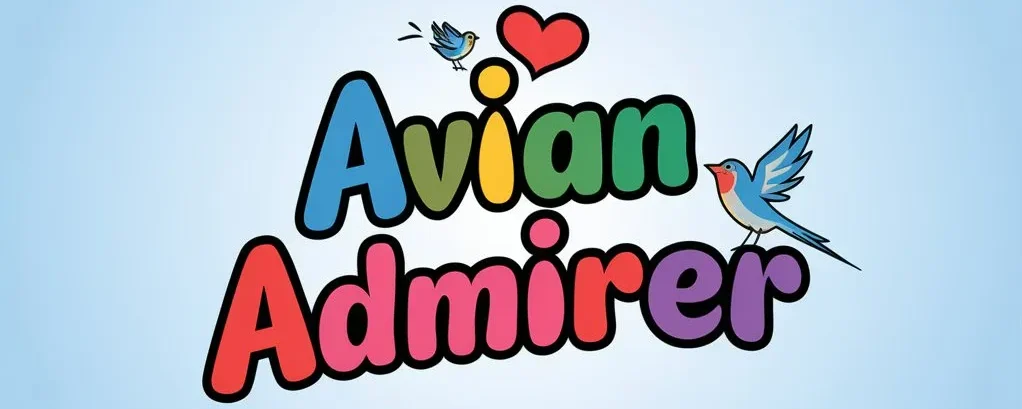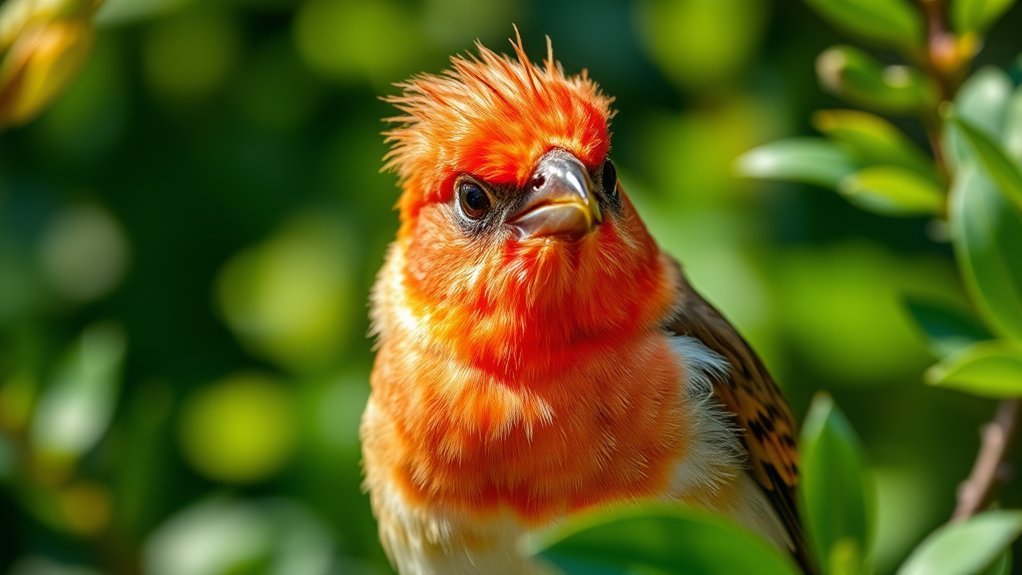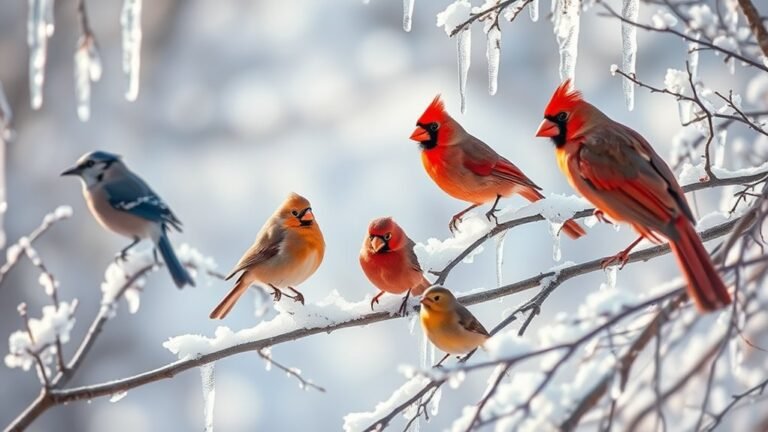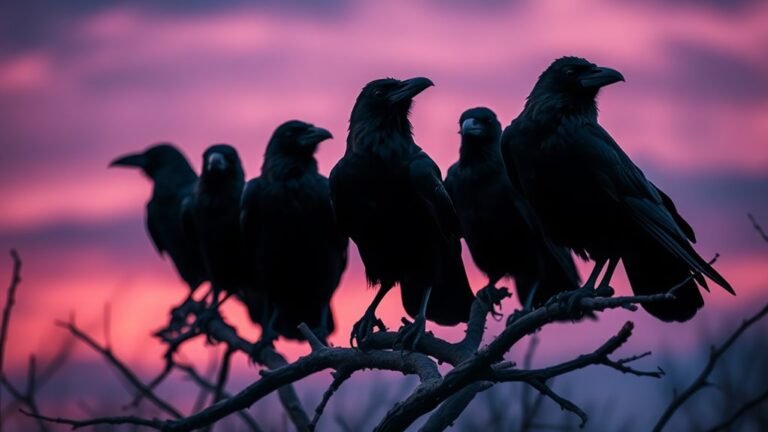Birds With Red Heads: Complete Identification Guide
Red-headed birds are fascinating and diverse. They have bright feathers and different behaviors. These birds play important roles in their ecosystems and show special adaptations to their environments. Knowing their physical features and habitats helps you identify them easily. As you watch these birds, think about their ecological roles and the best ways to see them in nature. Enjoy learning about their beauty and significance!
Key Takeaways
- Red-headed birds stand out due to their bright red feathers, which contrast with other colors on their bodies.
- Common types include the Red-headed Woodpecker and Scarlet Tanager. Each species has different habitats and behaviors.
- These birds inhabit areas such as deciduous forests and forest edges, which affect their feeding and mating habits.
- To improve your birdwatching skills, pay attention to their behaviors, sounds, and wing patterns.
- Use binoculars to get a closer look at these birds. Keep your voice low and avoid quick movements to respect their space.
Overview of Red-Headed Birds

Red-headed birds include around twelve notable species characterized by their vivid plumage. Examples are the bright Cardinal and the more subtle Red-headed Woodpecker.
These birds hold cultural importance in many societies, often representing energy and passion. Such symbolism connects them to folklore, conservation, and appreciation among birdwatchers and nature fans.
Recognizing these birds goes beyond their appearance; it involves understanding their role in culture and ecosystems.
Key Identification Features
Identifying red-headed birds is easy with careful observation of their key features. Look for the vibrant red color on their heads. This bright red usually stands out against their other feathers. Some birds may have deeper reds or even orange shades.
Pay attention to their feeding habits. Do they eat on the ground, in trees, or at bird feeders? This can help you recognize them.
Also note their wing patterns, bill shape, and body size. By focusing on color and feeding behaviors, you'll improve your ability to identify and appreciate these interesting birds.
Common Species of Red-Headed Birds

Birdwatchers often see many red-headed bird species. Each has unique traits.
The red-headed woodpecker has a bright red head and a black-and-white body. It often clings to tree trunks, standing out against the trees. You can hear their distinctive call, which enhances your birdwatching experience.
The scarlet tanager showcases brilliant red feathers, especially during breeding season. Its black wings create a striking contrast.
These birds live in deciduous forests and can be spotted among the treetops. Observing their behaviors and sounds helps deepen your connection to nature. Watching these birds enhances your appreciation of avian biodiversity and connects you to fellow birdwatchers.
Habitats and Behavior
Red-headed birds live in various habitats, which reflect their ecological roles. Each species has specific habitat preferences. For example, the Red-headed Woodpecker likes open forests, while the Scarlet Tanager prefers the edges of forests.
Their behaviors, such as how they find food and attract mates, show their adaptations. Many red-headed birds attract mates with visual displays of their bright red heads, while others use songs and calls.
Learning about these habits helps you appreciate red-headed birds more and connect with different ecosystems. Watching them in their environments can increase your knowledge and passion for birdwatching and conservation.
Tips for Birdwatching and Photography
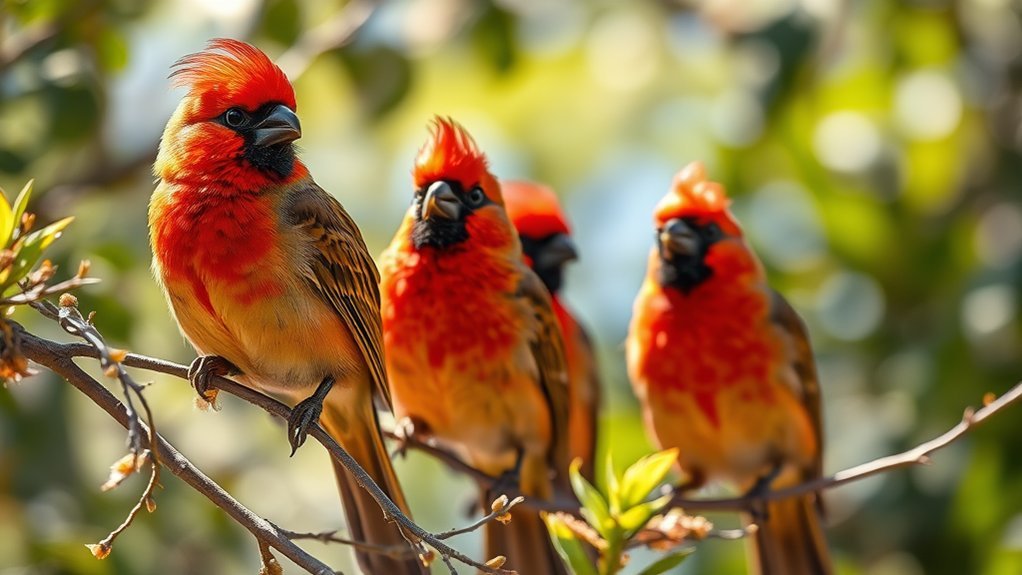
You have learned about the habitats and behaviors of red-headed birds. Now, you can improve your birdwatching and photography skills.
Start by using helpful birdwatching techniques. Stand or sit still to avoid scaring the birds. Use binoculars to find birds that may be hard to see. Watch how they feed and listen to their sounds to spot them more easily.
For photography, choose a camera with a good zoom lens. This allows you to take clear pictures from a safe distance. A tripod helps keep your camera steady. Adjust the camera settings based on the light conditions.
Always respect wildlife. Keep noise to a minimum and avoid disturbing the birds.
Frequently Asked Questions
Are All Red-Headed Birds Migratory Species?
Not all red-headed birds migrate. Their breeding habits differ, affecting their behavior. Some stay in one place all year, while others move to find food or better living conditions during different seasons.
Do Red-Headed Birds Have Any Cultural Significance?
Red-headed birds hold important cultural meanings in many folklore stories. They often symbolize passion, change, and energy. Different cultures see these birds as a connection to nature, helping to enhance our understanding of identity and community belonging. Their vibrant colors and lively presence make them captivating and significant in various traditions.
What Do Red-Headed Birds Typically Eat?
Red-headed birds usually eat seeds, fruits, and insects. Their diet may vary depending on the species. Knowing what they eat helps you understand their role in the environment. This knowledge can enrich your birdwatching experience and strengthen your connection with nature. Enjoy observing these birds as they search for food in their habitats.
Are Red-Headed Birds Endangered?
Some red-headed birds are endangered due to habitat loss. Conservation efforts are ongoing to protect these birds. These efforts aim to ensure their survival and support biodiversity in their habitats. Protecting these species helps maintain the balance of nature.
Can Red-Headed Birds Be Kept as Pets?
Keeping red-headed birds as pets can be challenging. These birds have specific habitat needs that require careful attention. To care for red-headed birds properly, you must understand their environmental requirements. This knowledge can help you ensure their well-being and create a positive experience as a pet owner.

Ava is a bird enthusiast and nature lover who has spent countless hours observing and learning about the fascinating world of birds. With a passion for sharing her knowledge and inspiring others to appreciate the beauty of birds, Ava writes about her experiences and insights on avianadmirer.com.
